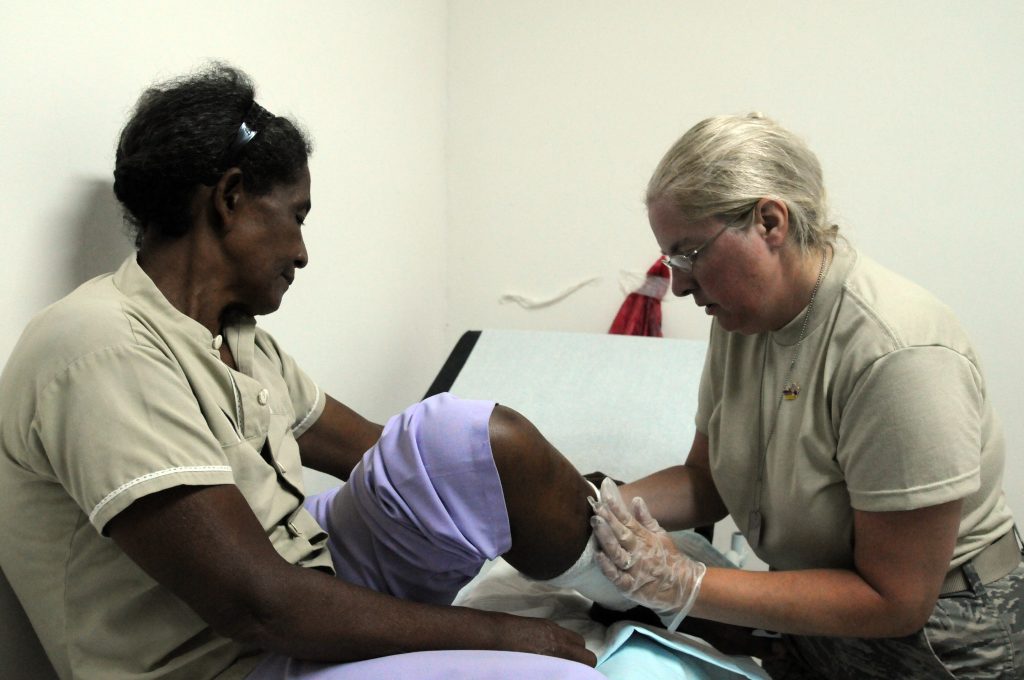 Medical malpractice claims typically involve allegations of negligence during a medical procedure. However, the following case presents a unique scenario where the alleged injury occurred after the procedure was completed. It examines the legal considerations and challenges in such situations, emphasizing the importance of evidence and expert testimony in establishing a breach of the applicable standard of care.
Medical malpractice claims typically involve allegations of negligence during a medical procedure. However, the following case presents a unique scenario where the alleged injury occurred after the procedure was completed. It examines the legal considerations and challenges in such situations, emphasizing the importance of evidence and expert testimony in establishing a breach of the applicable standard of care.
Kay Hanagriff received two punch biopsies at Dr. Shondra Smith’s dermatology office. While receiving the biopsies, Hanagriff told Smith she felt queasy. Smith told the nurse to put an ice pack on Hanagriff’s neck. After the nurse placed the ice pack on her neck, Hanagriff said she was feeling better. After the procedure, Smith told Hanagriff to lie flat on the exam table and had her staff monitor Hanagriff. Hanagriff ignored the staff’s instructions not to try to get off the exam table without assistance and claimed she fell and hurt her neck.
Hanagriff filed a complaint with the Louisiana Patient’s Compensation Fund. The medical review panel found neither Smith nor her staff breached the appropriate standard of care in their treatment of Hanagriff. Hanagriff then filed a lawsuit against Smith and her professional liability insurance carrier. At trial, the jury found against Hanagriff. Hanagriff appealed. She claimed the jury erred in finding Smith and her staff did not violate the applicable standard of care, and the evidence did not support the jury’s findings.
In medical malpractice lawsuits, the plaintiff must establish that the doctor’s treatment fell below the applicable standard of care for a doctor of the given specialty (here, a dermatologist) and establish a causal relationship between the purported negligent treatment and resulting injury. See Martin v. East Jefferson General Hosp. In determining the applicable standard of care, a doctor is not required to act perfectly. Instead, a court considers whether the doctor acted reasonably, considering the existing circumstances. See Sharpentier v. LAMMICO Ins. Co.
Here, Smith acted appropriately by having the nurse apply an ice pack to Hanagriff’s neck and having her staff monitor Hanagriff and tell her not to try to get up from the table independently. Further, no one observed Hanagriff’s purported fall. Although Hanagriff had another dermatologist testify as an expert witness, that dermatologist did not critique Smith’s standard of care besides the fact that Hanagriff claimed to have been left alone momentarily after she had allegedly claimed she was not feeling better. This critique was based solely on Hanagriff’s testimony.
Because no evidence was provided to corroborate this, the appellate court found the jury could clearly understand the evidence (or lack thereof). Therefore, it was reasonable for the jury to find Smith and her staff did not breach the applicable standard of care in trying to prevent Hanagriff from suffering a fall.
In this unique medical malpractice case, the alleged injury occurred after the procedure was completed. The appellate court affirmed the jury’s decision, finding that Smith and her staff did not breach the applicable standard of care. When pursuing a medical malpractice claim, it is crucial to consult with a skilled attorney who can help you gather and present compelling evidence to support your case, ensuring the best possible chance of success.
Additional Sources: Kay Hanagriff v. Preferred Professional Ins. Co., et al.
Additional Berniard Law Firm Article on Medical Malpractice Claims: Navigating Medical Malpractice Claims: Understanding Legal Requirements to Seek Compensation for Harm Done by a Doctor Experts Testify in Neurosurgery Medical Malpractice Claim
 Louisiana Personal Injury Lawyer Blog
Louisiana Personal Injury Lawyer Blog

